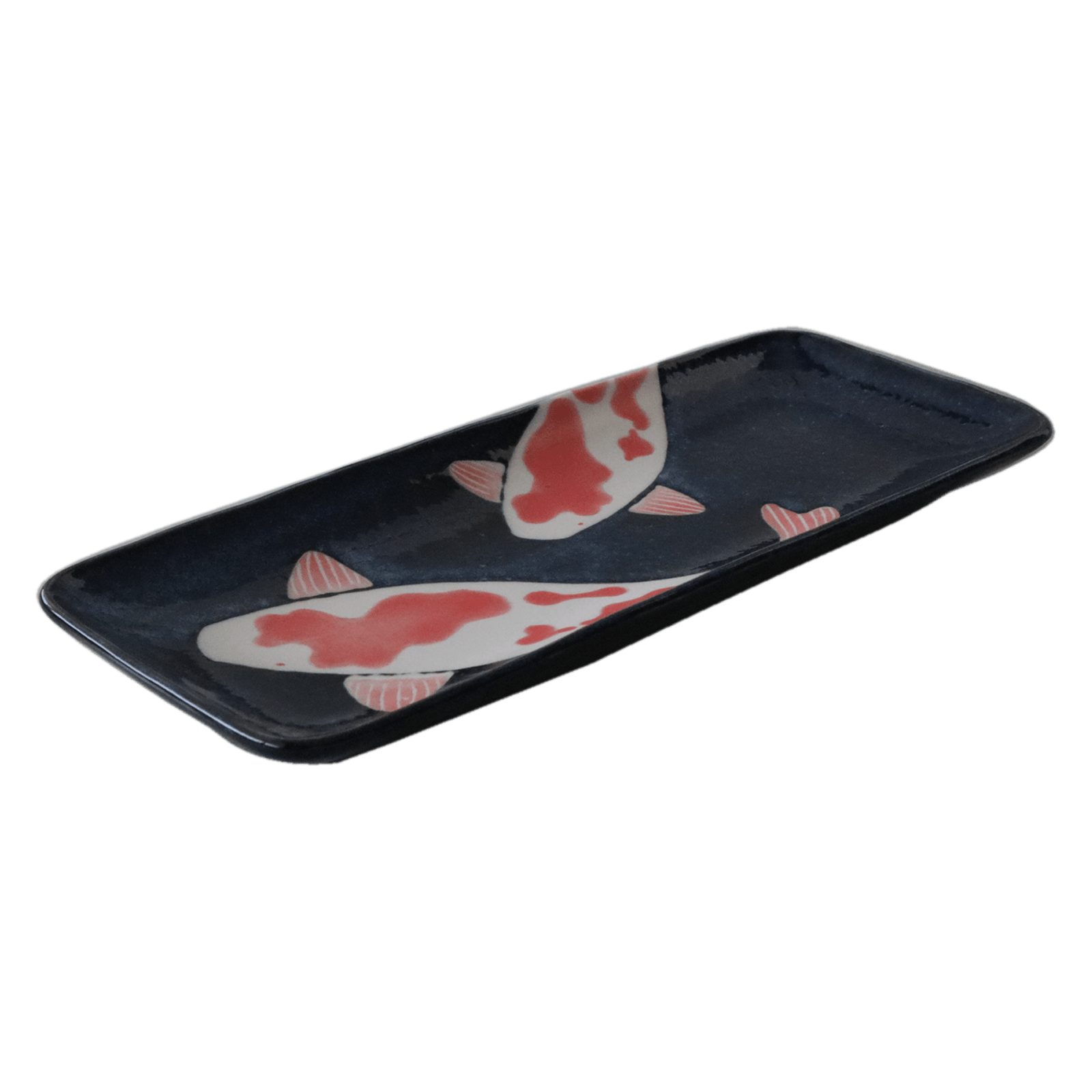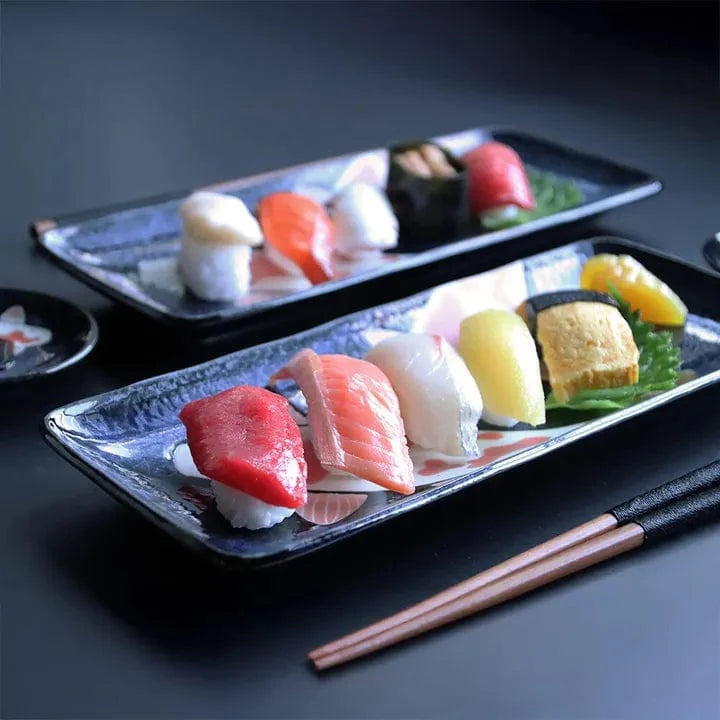


Nishiki Goi Sushi Plate
Fast & Secure Delivery from Japan to your Door [Shipping Policy]
Shop Safely with Encrypted Checkout and Verified Gateways.
Pairs well with

Nishiki Goi Sushi Plate
Grace in Motion – Nishiki Goi Noodle Bowl
Bring grace and artistry to your table with this rectangular porcelain sushi plate from the Nishiki Goi Collection. Adorned with two elegant red-and-white koi gliding across a rich indigo surface, the design pays homage to the koi's cultural symbolism in Japan—representing strength, harmony, and enduring beauty.
Its refined rectangular shape is perfect for showcasing sushi, sashimi, rolled appetizers, or even sweets and pastries in a minimalist, elegant style. The water-repellent glaze not only enhances the color contrast but also adds a subtle sheen that highlights the hand-painted detail of each koi.
Crafted from durable porcelain, this plate is as practical as it is visually striking—blending seamlessly into both Japanese and Western-inspired table settings.
Pair it with other pieces from the Nishiki Goi series to create a harmonious and meaningful dining experience steeped in tradition and elegance.
Product Information
Care instructions
Maker
Note
FAQs
All you need to know about Japanese Pottery.
What types of traditional pottery are made in Japan?
Japan is home to several renowned pottery styles, including Mino ware (Gifu), Bizen ware (Okayama), Arita and Imari ware (Saga), Shigaraki ware (Shiga), and Mashiko ware (Tochigi). Each region has its own distinct materials, glazes, and firing techniques that reflect local history and aesthetics. Toki City in Gifu Prefecture is particularly renowned as the heart of Mino ware (Minoyaki)—the most widely produced pottery style in Japan.
What materials are used in artisan Japanese pottery?
Most artisan pottery in Japan is made from locally sourced clay, often mixed and refined by hand. Natural minerals and ash are used in glazes, and many pieces are wood-fired or fired in traditional climbing kilns (noborigama), producing unique surface textures and natural variations.
Are artisan Japanese pottery pieces safe for food use?
Yes. Authentic artisan pottery is made with food-safe, lead-free glazes and is carefully fired at high temperatures to ensure durability and safety. However, it's important to follow care instructions, especially for unglazed or porous ceramics.
What makes Japanese pottery different from Western ceramics?
Japanese pottery often emphasizes wabi-sabi—the beauty of imperfection—resulting in organic shapes, subtle asymmetry, and natural glazes. Unlike Western ceramics, which may prioritize uniformity, Japanese pieces often celebrate the individuality of each item, reflecting the artist's hand and the firing process.
How should I care for artisan-made Japanese pottery?
Hand-wash pottery with mild soap and avoid extreme temperature changes (like placing hot items into cold water). Some unglazed pieces may absorb moisture, so allow them to fully dry before storing. Avoid microwaves or dishwashers unless the piece is specifically labeled as safe for such use.

